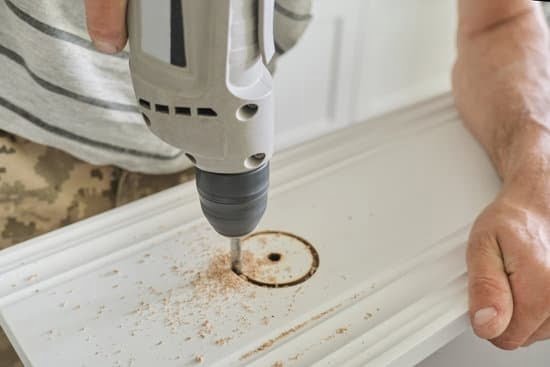When it comes to woodworking, safety is paramount, and one crucial component that plays a significant role is magnetic switches. These innovative devices serve as essential safety features in woodworking machinery, ensuring that operations can be swiftly halted in case of an emergency. Beyond safety, magnetic switches offer a range of benefits that enhance the efficiency and convenience of woodworking projects.
Magnetic switches work by using magnetic fields to control the flow of electricity, making them reliable and durable components for woodworking equipment. They are designed to prevent accidental starts or unintended operations, providing an added layer of protection for woodworkers. Whether it’s a safety switch, paddle switch, or remote switch, these types of magnetic switches cater to different needs and preferences in the woodworking industry.
The advantages of incorporating magnetic switches into woodworking tools are manifold. From improved safety measures to increased operational convenience and efficiency, these devices elevate the overall woodworking experience. By understanding the intricacies of how magnetic switches function and exploring the various types available, woodworkers can make informed decisions when selecting the right switch for their specific needs.
How Magnetic Switches Work
Magnetic switches play a crucial role in woodworking machinery by ensuring safety and control over the equipment. These switches work based on the interaction of magnetic fields to initiate or interrupt the flow of electricity within the machinery.
When the switch is turned on, the magnetic field attracts a metal armature or contact, allowing current to pass through and power up the machine. Conversely, turning off the switch causes the magnetic field to repel the armature, breaking the circuit and shutting down power to the equipment.
Usage in Woodworking Machinery
In woodworking machinery, magnetic switches are commonly used as safety devices to prevent accidental start-ups or unexpected shutdowns. They provide an additional layer of protection for woodworkers by requiring a deliberate action to turn on or off the equipment. Magnetic switches are often integrated into table saws, band saws, drill presses, and other woodworking tools where precise control over power supply is essential for safe operation.
Functionality and Benefits
The functionality of magnetic switches in woodworking machinery offers several benefits. Not only do these switches help prevent unauthorized use of equipment and reduce the risk of injury from unexpected start-ups, but they also allow for easy restarts after power outages without compromising safety protocols.
Additionally, magnetic switches enhance operational efficiency by enabling woodworkers to quickly power up or shut down machines with a simple flick of a switch, saving time and effort during project execution. Overall, incorporating magnetic switches into woodworking tools promotes a safer working environment while optimizing productivity in workshop settings.
Types of Magnetic Switches
Magnetic switches play a crucial role in ensuring the safety and efficiency of woodworking equipment. There are various types of magnetic switches available that cater to different needs and preferences in the woodworking industry. Safety switches, paddle switches, and remote switches are among the most commonly used types of magnetic switches in woodworking.
Safety switches are designed to prevent accidental start-ups and provide an extra layer of protection for woodworkers. These switches are essential for machinery that poses a higher risk of injury if not handled properly. Paddle switches, on the other hand, offer convenience and ease of use when operating woodworking tools. The paddle can be easily pressed or pushed to activate or deactivate the switch, allowing for quick adjustments during work.
Remote switches are another popular choice for woodworkers who need flexibility and control over their equipment. These switches allow users to operate machinery from a distance, enhancing safety by minimizing direct contact with potentially hazardous tools. Additionally, remote switches can improve workflow efficiency by enabling workers to adjust settings without having to physically be near the machine.
When considering which type of magnetic switch to use for woodworking equipment, it is important to assess the specific requirements of your projects and workshop setup. Each type of switch has its own advantages and features that may better suit certain applications. By choosing the right magnetic switch for your woodworking tools, you can enhance both safety measures and overall productivity in your woodworking projects.
| Type of Magnetic Switch | Key Features |
|---|---|
| Safety Switches | Prevents accidental start-ups, adds extra protection |
| Paddle Switches | Offers convenience and quick adjustments |
| Remote Switches | Allows operation from a distance, enhances safety and workflow efficiency |
Advantages of Using Magnetic Switches
One of the key advantages of using magnetic switches for woodworking is the enhanced safety they provide. Magnetic switches are designed to prevent unintentional restarts of machinery after a power interruption, such as a power outage or unplanned shutdown.
This feature ensures that woodworkers are protected from accidents caused by sudden machine restarts, reducing the risk of serious injuries in the workshop. Additionally, magnetic switches also offer overload protection, shutting off power to the equipment in case of an overload situation, further enhancing safety measures in woodworking operations.
In addition to safety benefits, magnetic switches also provide convenience and efficiency in woodworking projects. These switches can easily be turned on and off with a simple reed sensor or magnet arrangement, eliminating the need for complex wiring or manual operation.
This streamlined operation saves time and effort for woodworkers, allowing them to focus more on their craft rather than intricate machinery controls. Moreover, the quick response time of magnetic switches ensures prompt power cutoff when needed, increasing overall efficiency in woodworking processes and minimizing downtime.
Furthermore, magnetic switches for woodworking offer reliability and durability in various workshop conditions. Unlike traditional mechanical switches that may wear out over time due to frequent use, magnetic switches have fewer moving parts that can break or malfunction.
This robust construction makes magnetic switches ideal for long-term use in woodworking machinery, providing consistent performance and peace of mind to woodworkers. With their combination of safety features, convenience, efficiency, reliability, and durability, magnetic switches have become essential components in modern woodworking equipment setups.
| Advantages | Benefits |
|---|---|
| Safety | Prevents accidents from unintended restarts |
| Convenience | Easy on/off operation without complex wiring |
| Efficiency | Quick response time and reduced downtime |
Choosing the Right Magnetic Switch for Your Woodworking Tools
When it comes to choosing the right magnetic switch for your woodworking tools, there are several factors to consider to ensure optimal performance and safety in your projects. One of the key considerations is the type of woodworking machine or tool you are using, as different equipment may require specific types of magnetic switches. Safety switches, paddle switches, and remote switches are among the options available for woodworking equipment, each offering unique features to suit various needs.
Consider Your Woodworking Environment
Before selecting a magnetic switch, it is essential to assess the environment in which you will be working. Factors such as dust, debris, moisture levels, and temperature can all impact the performance of your magnetic switch. Choose a switch that is designed to withstand the conditions present in your woodworking space to ensure longevity and reliability.
Ensure Compatibility
Another important factor to consider when choosing a magnetic switch for your woodworking tools is compatibility. Make sure that the switch you select is compatible with the voltage requirements of your equipment and that it can handle the electrical load produced by your machinery. Installing an incompatible switch can lead to malfunctions or even pose safety hazards in your workshop.
Prioritize Safety Features
Safety should always be a top priority when selecting a magnetic switch for woodworking tools. Look for switches that have built-in safety features such as emergency stop buttons, overload protection, and lockout mechanisms to prevent accidents and injuries in case of an emergency.
Investing in a high-quality magnetic switch with advanced safety features can provide peace of mind while working with power tools in your woodworking projects. By considering these tips and factors when selecting a magnetic switch for your woodworking tools, you can enhance efficiency, ensure safety, and maximize the effectiveness of your equipment in all your woodworking endeavors.
Installation Guide for Magnetic Switches
Magnetic switches for woodworking are essential components that play a crucial role in ensuring safety and efficiency in woodworking projects. Proper installation of these switches is vital to prevent accidents and injuries, as well as to optimize the performance of woodworking machinery. Follow these step-by-step instructions to properly install magnetic switches on various woodworking machines:
1. Determine the Placement: First, decide where you want to install the magnetic switch on your woodworking machine. Consider the accessibility and functionality of the switch when selecting the placement.
2. Prepare the Surface: Before installing the magnetic switch, ensure that the surface is clean and free from any debris or dust particles that could interfere with its operation. Use a damp cloth to wipe down the area if necessary.
3. Mounting Process: Depending on the type of magnetic switch you have, follow the manufacturer’s instructions for mounting it onto your woodworking machine. This may involve using screws or adhesive to secure the switch in place.
4. Connect Wiring: Once the switch is securely mounted, connect the wiring according to the diagram provided with the switch. Make sure all connections are tight and secure to prevent any electrical issues.
5. Testing: After installation, test the magnetic switch by turning on your woodworking machine and checking if it functions correctly. Test both activation and deactivation of the switch to ensure it works as intended.
By following these steps carefully, you can successfully install magnetic switches for woodworking on your equipment, enhancing safety and efficiency in your woodworking projects. Regularly inspect and maintain these switches to prolong their lifespan and keep them operating smoothly during use.
Maintenance and Care Tips for Magnetic Switches
Magnetic switches play a crucial role in woodworking equipment, providing safety and convenience in the operation of various machines. To ensure the longevity and optimal performance of these magnetic switches, it is essential to follow proper maintenance and care tips. By taking good care of your magnetic switches, you can prevent malfunctions and prolong their lifespan, ultimately benefiting your woodworking projects.
Here are some helpful maintenance and care tips for magnetic switches for woodworking:
- Regular Inspection: Conduct regular inspections of your magnetic switches to check for any signs of wear or damage. Look out for loose connections, corrosion, or overheating, which could affect the performance of the switch.
- Cleanliness: Keep your magnetic switches clean from dust, debris, or any other contaminants that may interfere with the mechanisms. Use a soft, dry cloth to wipe down the switch regularly and remove any buildup that could impair its functionality.
- Lubrication: Some magnetic switches may require lubrication to ensure smooth operation. Refer to the manufacturer’s guidelines on how to properly lubricate the switch without causing damage. Avoid using excessive lubricants that could attract more dirt and compromise the switch.
By following these maintenance and care tips for your magnetic switches, you can prolong their lifespan and maintain their optimal performance in your woodworking machinery. Remember that well-maintained magnetic switches contribute to a safer working environment and enhance efficiency in your woodworking projects.
Magnetic Switch Safety Precautions
When using magnetic switches for woodworking, it is important to keep in mind certain safety precautions to prevent accidents and injuries. One of the key safety measures when working with magnetic switches is to ensure that they are properly installed and maintained.
Before using any woodworking machinery equipped with a magnetic switch, always double-check that the switch is securely in place and functioning correctly. Regularly inspecting the switch for any signs of wear or damage can help prevent malfunctions that could lead to dangerous situations.
Another crucial safety precaution to consider when using magnetic switches in woodworking is to follow proper lockout/tagout procedures. When performing maintenance or repairs on woodworking equipment, make sure to disconnect power sources and lock out machinery to avoid accidental start-ups. This will help protect both yourself and others from potential harm caused by unexpected activation of the machinery through the magnetic switch.
In addition, it is essential to educate yourself and anyone else using woodworking tools equipped with magnetic switches on how to operate them safely. Providing training on proper usage and handling of magnetic switches can help reduce the risk of accidents in the workshop.
Always be aware of your surroundings when working with woodworking machinery, especially when operating tools that are controlled by magnetic switches, as they can be sensitive to external influences like strong magnets or electromagnetic fields. By following these safety precautions, you can ensure a safe working environment while utilizing magnetic switches in your woodworking projects.
Conclusion
In conclusion, magnetic switches play a crucial role in woodworking projects by providing safety, convenience, and efficiency. The mechanism behind magnetic switches ensures that woodworking machinery can be easily controlled with a simple switch of magnets. With various types available such as safety switches, paddle switches, and remote switches, woodworkers have a range of options to choose from based on their specific needs and preferences.
The advantages of using magnetic switches in woodworking cannot be overstated. Not only do they enhance the overall safety of the workspace by preventing unauthorized use or accidental start-ups, but they also streamline the workflow by allowing for quick and easy operation of machinery. Additionally, the installation process for magnetic switches is relatively straightforward, making it accessible for woodworkers at all skill levels to incorporate this essential tool into their equipment.
When selecting the right magnetic switch for woodworking tools, it is important to consider factors such as compatibility with existing machinery, ease of use, and durability. By following proper installation guidelines and maintenance tips, woodworkers can ensure that their magnetic switches remain in optimal condition for long-term use. Overall, integrating magnetic switches into woodworking projects is a smart investment that not only enhances efficiency but also prioritizes the safety of individuals working with woodworking machinery.

Hi everyone! I’m a woodworker and blogger, and this is my woodworking blog. In my blog, I share tips and tricks for woodworkers of all skill levels, as well as project ideas that you can try yourself.





